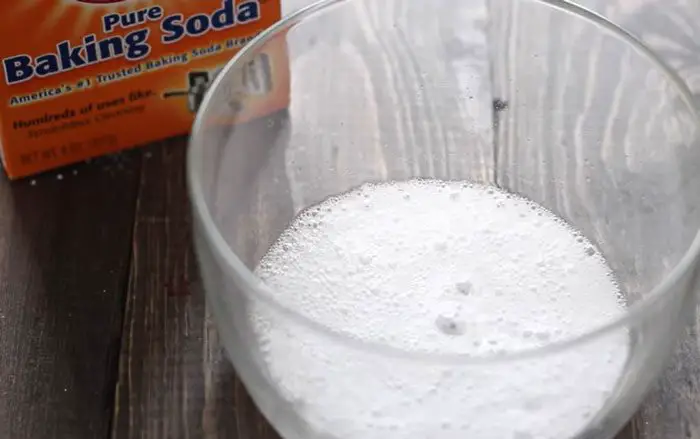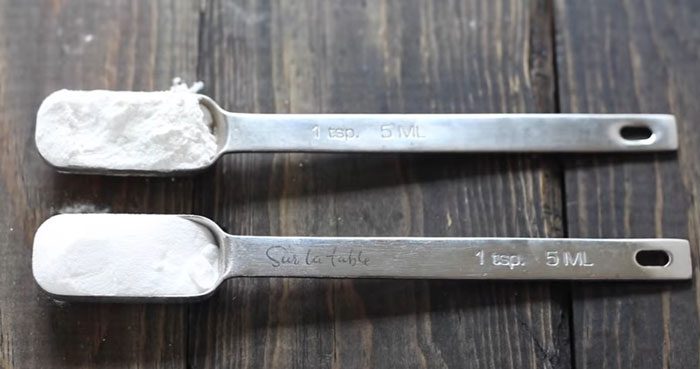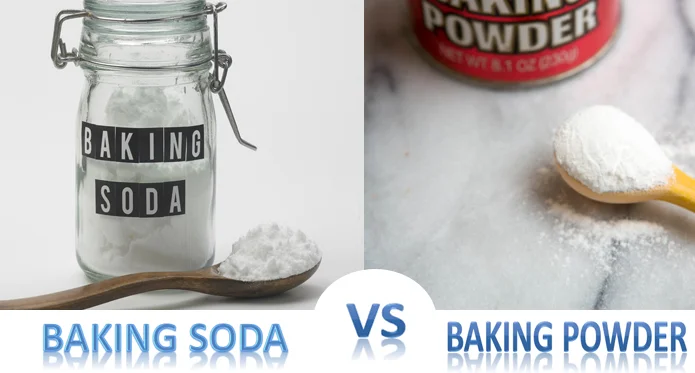Last Updated on November 14, 2023
Baking soda and baking powder are both used for cooking, but they have different purposes. Baking soda is used as a leavening agent, while baking powder is a combination of baking soda and cream of tartar.
Although both substances can be used for cleaning, they have different properties that better suit certain tasks. This article focuses on the differences between baking soda vs baking powder for cleaning.
WhatiIs the Difference Between Baking Soda Vs Baking Powder for Cleaning

Cleaning with baking soda and baking powder differs in a few ways, including the following:
What is Baking Powder?
Baking powder is a combination of baking soda and cream of tartar. It can be found in most kitchens because it’s usually used to make baked goods rise and gain fluffiness. Baking powder works like baking soda, but with one extra step: the acidity of the batter activates the leavening agent.

What is the Purpose of Baking Powder?
Baking powder has many uses both in baking and as a cleaning agent. It’s often used to make baked goods rise, but it can also be found in some homemade beauty products because of its exfoliating properties.
How is a Baking Powder Used?
Baking powder is usually mixed with a liquid ingredient, but it can also be used to make dry mixes. Baking powder can be easily combined with other ingredients because it’s soluble in hot or cold water.
What is Baking Soda?
Baking soda, also known as sodium bicarbonate, is a white powder that is often used in cooking. There are not many cleaning applications for baking soda because it isn’t acidic enough to be effective.

Baking soda can even soften water if the two substances mix together. Even though baking soda has few uses for home cleaning purposes, it does have some advantages because of its low toxicity and ability to neutralize odors.
Here are the Best Baking Soda Cleaning Hacks

The following are the best cleaning applications for baking soda:
Plastic Containers That Are Stained
To clean stained plastic containers, make a baking soda paste. Use an old toothbrush to scrub the containers until all of the stains disappear. Rinse with water after cleaning the plastic containers, and then dry them in the sun if possible before storing them away again.
Removing Coffee or Tea Stains On Mugs and Cups
Baking soda can be used to scrub away coffee or tea stains from mugs and cups. Mix baking soda with a small amount of water until it becomes a thick paste, then use an old toothbrush to apply the mixture onto the stains on the mugs and cups. Scrub for 5 minutes, and then rinse them under running water.
You Can Also Read: Hamilton Beach Coffee Maker: How Do I Clean It?
Removing Odors in Microwaves
In order to clean odor-filled microwaves, sprinkle some baking soda inside. Add warm water and vinegar, and then heat it. After heating, remove the hot mixture from the microwave and wipe it with a sponge or cloth before rinsing with warm water.
Removing Stains on Carpets
Mix baking soda and warm water together to remove stains from carpets. Let it sit for half an hour to let the baking soda soak up stains, then vacuum the carpet.
Cleaning Stovetops
To clean greasy or stained areas on glass stovetops, mix baking soda with warm water. Rub the paste onto the glass surface to remove grease and grime. Wash the area with water and dishwashing liquid.
Removing Stains on Pots and Pans
Make a paste of baking soda and water to remove burnt-on food stains from pots and pans. Apply the paste to the stain, and then let it sit for three hours before scrubbing with an old toothbrush. Wash with water after cleaning.
Cleaning Cast Iron
Removing oil residue from cast iron pans can be difficult, but it’s possible. Make a mixture of baking soda and water. Scrub the paste onto greasy or stained areas with an old toothbrush for approximately six minutes. Clean the area with washing soda before rinsing with warm water.
Cleaning Silverware
To clean silverware, make a mixture of baking soda and dishwashing liquid. Apply the paste to the silverware before rinsing with water.
The Top Differences between Baking Soda and Baking Powder

The Acidic or Alkaline Difference
Baking soda is an alkaline substance with a pH of about 8.3 (the scale runs from 0 to 14). Baking powder, on the other hand, baking powder has a higher pH than baking soda and also contains an acid ingredient such as cream of tartar. It is important not to confuse baking powder for baking soda when cleaning.
Use as a Leavener
Baking soda is used as a leavening agent to help baked goods rise, while baking powder already has an acidic substance in it that makes it react right away when mixed with liquid.
Effect on the Taste of Food
If you use too much baking soda, it can make your food taste salty, and it also has a bitter aftertaste. Baking powder will not affect the taste of food as much because the acidic substance that causes it to start reacting with liquid is already contained in the baking powder.
Different Composition
Baking soda and baking powder are not composed of the same materials. It contains bicarb soda, while baking powder can be composed of calcium acid phosphate, which is a combination of cream of tartar and baking soda.

The differences between the two substances make them better suited for certain tasks. For example, baking soda is alkaline, so it works well as an abrasive cleaner on surfaces that are very dirty. Baking powder is better suited for baked goods because it has the right properties to help them rise.
Effect on the Environment
Baking soda is safe for use in your home because it is non-toxic, but how it affects the environment depends on where you live. In some areas, it can cause ecological damage in some areas if spilled into waterways or washed away by rainwater in some areas.
Baking powder emits carbon dioxide when used as a leavening agent, so it is advisable to use green products in lieu of baking powder when you are baking.
Effect of Temperature
As baking soda is sensitive to heat, it is a better substance for cleaning with cold water. Baking powder is better suited for hot temperatures because the acidic substance contained in baking powder begins reacting as soon as it comes into contact with a liquid.
Advantages of Baking Powder over Soda
While both kinds of leavening agents release carbon dioxide bubbles into baked goods, there are some advantages to using baking powder over the baking soda. These include:
- The strength of the leavening agent is consistent, unlike with baking soda where using more or less can affect the final product.
- It isn’t affected by the acidity in the other ingredients in a recipe. Even when acidic ingredients are present, they will still release carbon dioxide.
- Baking powder is generally three times as strong as baking soda, so it doesn’t need to be mixed with an acid to activate it. This saves time by not requiring the mixture of dry ingredients before adding them to a recipe.
Advantages of Baking Soda over Baking Powder
Some advantages that baking powder has over baking soda are that it doesn’t require an acid to be activated, and it can last longer. Baking soda does have some advantages, however. They include:
- There is no risk of spoiled leavening agents since there is no time between when they are added to the other dry ingredients and when the batter is baked.
- Baking soda requires an acidic ingredient, which can affect the taste of baked goods that are supposed to be neutral. This is only a problem with certain leaveners though, such as cakes or other sweet recipes.
- Although baking powder does not lose its effectiveness over time like baking soda, it does lose some of its strength when exposed to humidity or high temperatures.
Final Words
In conclusion, baking powder is used for recipes that need a leavener. It can be more expensive than baking soda, and it doesn’t work as well with acidic ingredients in the recipe, but some benefits include consistency of strength and not being affected by acidity within the recipe. Baking soda is better suited to cleaning surfaces because of its abrasive properties. That said, you should use both substances rather interchangeably since there are advantages to each based on what needs they’re fulfilling.


